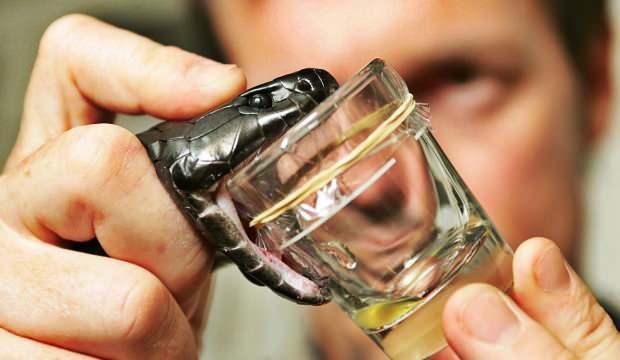The study, published in the latest issue of Science Advances, builds on the potential healing properties of an enzyme known as batroxobin, or reptilase, found in the venom of the spear-headed pit viper.
The research team consists of scientists from the University of Manitoba, Canada, and the Western University in London, and the Army Medical University in Chongqing, China.
Brain implant that puts thoughts into words
 NASA announced: There will be flood disasters on Earth because of the moon
NASA announced: There will be flood disasters on Earth because of the moon
CAN BE USED ON THE FIELD
Speaking to CBC Radio about the study, bioengineer Kibret Mequanint from Western University said, “Some poisons kill by diluting the blood, others by affecting the neurological system. Reptilase is an enzyme known to induce blood clotting. ‘What if we reverse it and use it as a treatment tool?’ And here we are.” used the phrase.
Mequanint said the team has designed a type of skin adhesive that can be packaged in a small tube, using the blood-clotting effect of an enzyme in a gelatin. According to the information given by Mequanint, the adhesive in question can also be used in the field.
Accordingly, it will be possible to activate the enzyme in the tissue glue, which can be squeezed into a life-threatening hemorrhagic wound by a medical personnel, by holding the light of a laser pointer or a flashlight on smartphones.
STOP BLEEDING IN 45 SECONDS
Explaining that the adhesive gel will transform into a liquid suture shape in a few seconds, Kibret Mequanint said, “All you have to do is squeeze this gel from a small bottle into the tissue and shine a light to create a very hard and very strongly bonded tissue adhesive that stops major bleeding in about 45 seconds. ” he said.
Malcolm Xing, who participated in the research from the University of Manitoba, said in his assessment on CBC Radio that an experience in his own childhood made him want to investigate the properties of snake venom.
Xing said, “When I was a kid, I saw snake venom clot the blood very quickly. The scenario has haunted me for years. Then two years ago, I thought, ‘Why not use snake venom-derived enzyme for high-efficiency hemostasis.’ We worked with friends to discuss the possibility. “We’ve developed a visible light-triggered gel with the enzyme. I’m proud that this development could have enormous potential to save people’s lives.” said.
The tissue adhesive created by the researchers resists the presence of intense liquid blood in the applied area.
Scientists announced that the tissue glue they found has 10 times more stickiness and 2 times more sealing power than fibrin glue.
It is reported that the tissue adhesive will be ready for commercial production and widespread use within the next five years.
SOURCE: AA
– .


